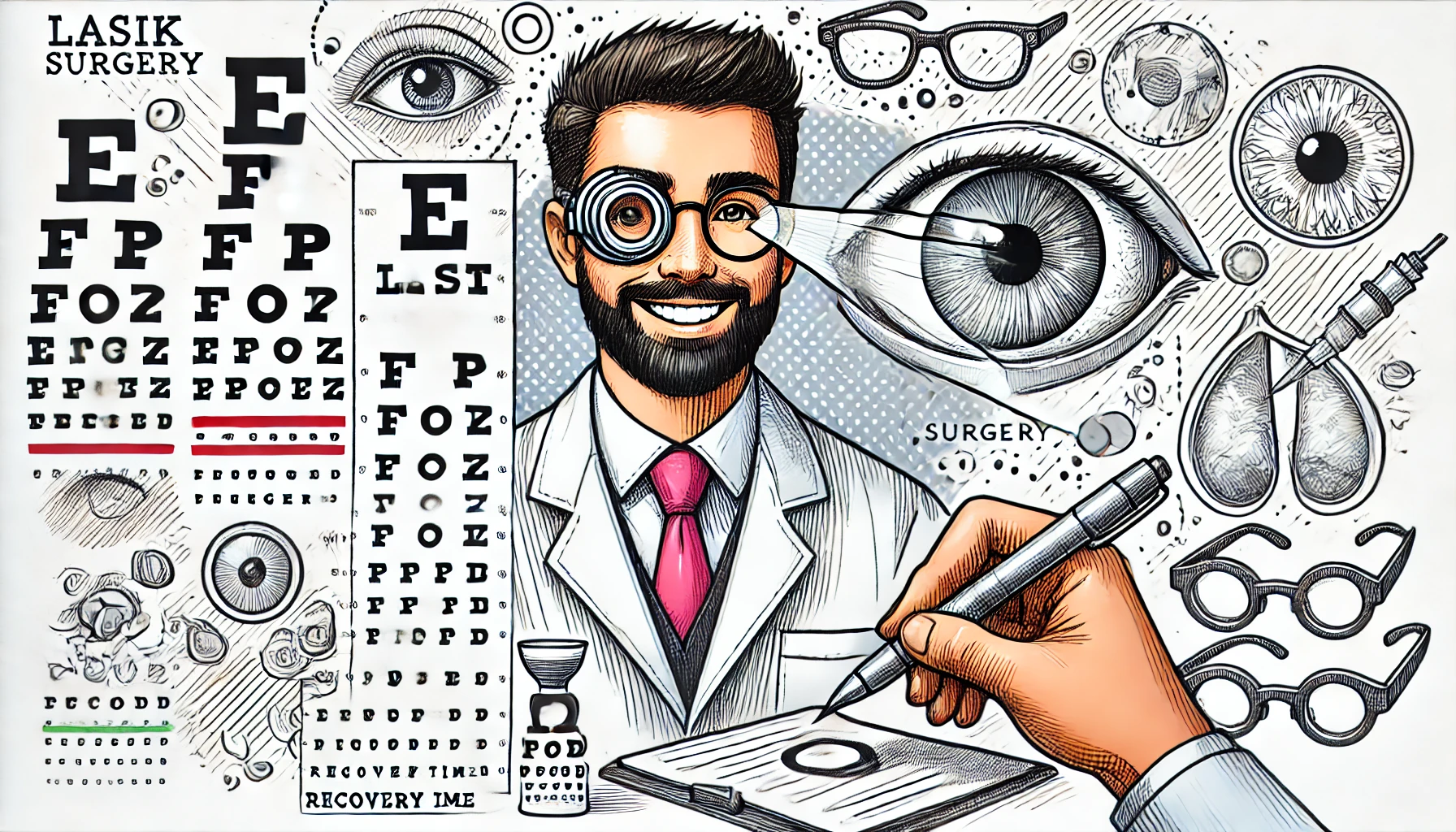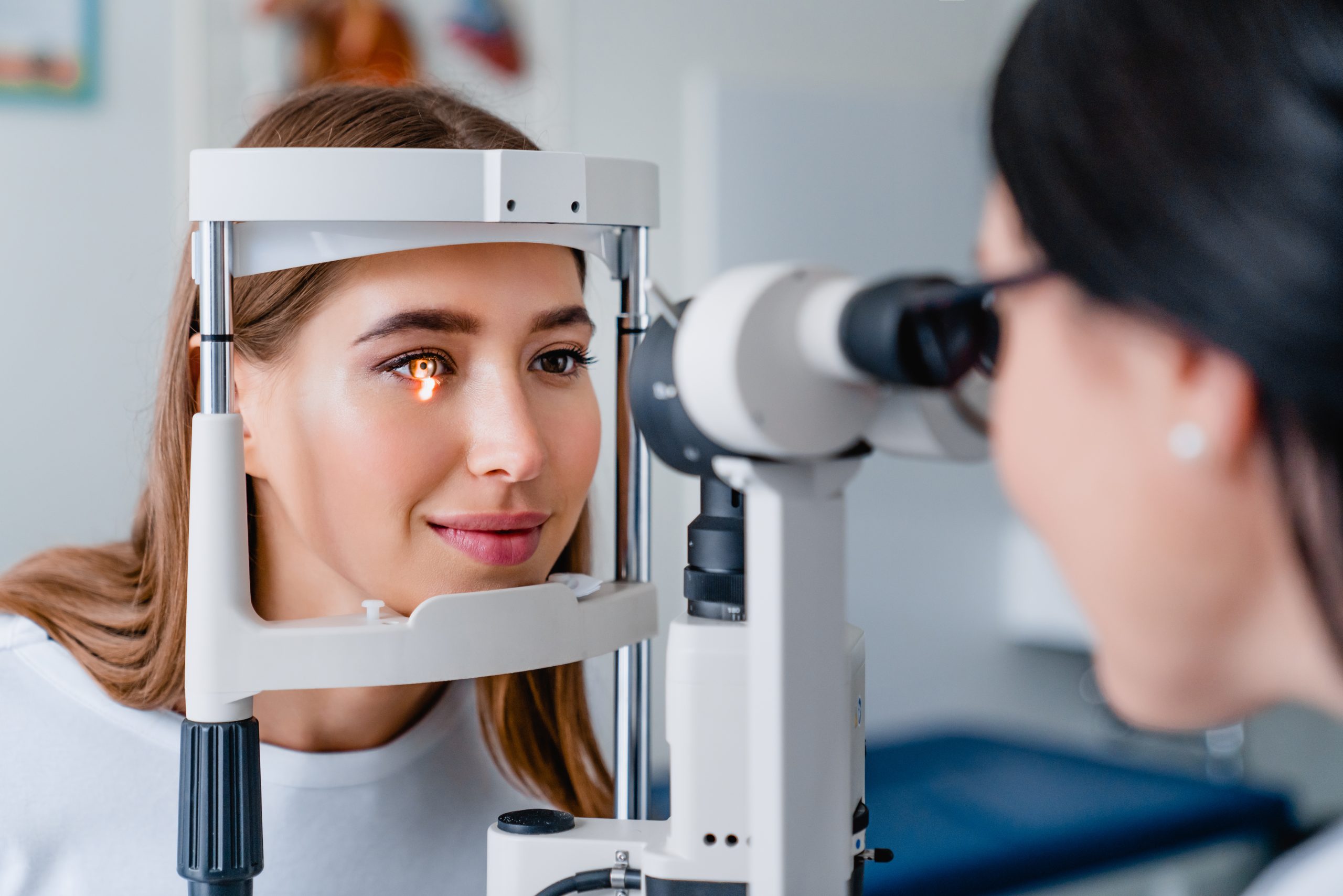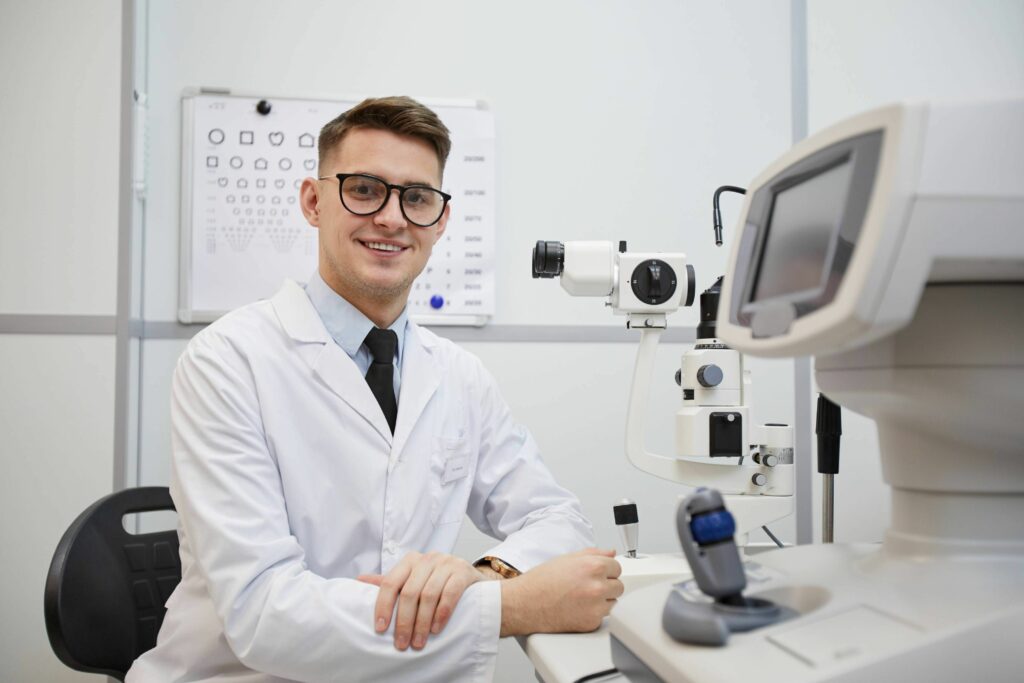Lasik Surgery - Everything You Need To Know
When Lasik was developed in the early 1990s, it combined the procedures of photorefractive keratectomy (PRK) and keratomileusis, revolutionizing vision correction. Using a specialized laser, the surgeon creates a thin flap in the cornea during the procedure. Lasik surgery has become more common as a result of improvements in safety and efficacy over time. This article delves right into lasik surgery and everything you need to know.

Jul 02, 2024
A common eye procedure called Lasik (Laser-Assisted In Situ Keratomileusis) is used to treat visual problems like astigmatism, farsightedness, and nearsightedness. When Lasik was developed in the early 1990s, it combined the procedures of photorefractive keratectomy (PRK) and keratomileusis, revolutionizing vision correction. Using a specialized laser, the surgeon creates a thin flap in the cornea during the procedure.
To enhance the eye's capacity to accurately concentrate light on the retina, this flap is raised, and the underlying corneal tissue is reshaped using a different laser. After reshaping, the flap is adjusted such that stitches are not necessary and the healing process proceeds spontaneously. Lasik surgeryhas become more common as a result of improvements in safety and efficacy over time. This article delves right into lasik surgery and everything you need to know.
Eligibility For Lasik
Not everyone qualifies for Lasik eye surgery; ideal candidates are typically over 18 years old, have had stable vision for at least a year, and do not have serious eye diseases or conditions. Factors such as age and stable vision are crucial because they ensure the eye has finished developing and that any vision prescription has remained consistent, reducing the likelihood of changes post-surgery. Additionally, candidates should be in good overall eye health without conditions like severe dry eye, glaucoma, or cataracts, which could complicate the procedure or healing process.
Pre-Surgery Eye Examination
A comprehensive eye examination is essential before undergoing Lasik to ensure the procedure's safety and effectiveness. This thorough exam includes measuring the cornea's thickness and shape, pupil size, and refractive errors, along with checking for any other eye conditions. These detailed measurements allow the surgeon to create a precise surgical plan tailored to the patient's unique eye structure and vision needs, maximizing the chances of a successful outcome and minimizing potential risks.
Conditions Treated By Lasik
Nearsightedness (Myopia)
This condition occurs when the eye is too long or the cornea is too curved. As a result, light entering the eye focuses in front of the retina rather than directly on it. People with myopia can see nearby objects clearly, but distant objects appear blurry.
Myopia is often diagnosed in childhood and can progressively worsen over time. Lasik surgery corrects myopia by flattening the cornea, which allows light to properly focus on the retina, improving distance vision significantly.
Farsightedness (Hyperopia)
In hyperopia, the eye is too short, or the cornea is too flat, causing light to focus behind the retina instead of on it. This condition makes close objects appear blurry while distant objects can be seen more clearly. Farsightedness can lead to eye strain and headaches, especially during tasks like reading or computer work. Lasik surgery corrects hyperopia by reshaping the cornea to a steeper curvature, which moves the focal point forward onto the retina, enhancing near vision clarity.
Astigmatism
Astigmatism is caused by an irregularly shaped cornea or lens that prevents light from focusing evenly on the retina, resulting in blurred or distorted vision at all distances. Instead of being perfectly spherical, the cornea or lens is shaped more like a football, which causes light to scatter rather than focus sharply.
This condition can accompany myopia or hyperopia, adding complexity to vision correction. Lasik addresses astigmatism by smoothing and reshaping the cornea into a more symmetrical form. This allows light to focus correctly on the retina, providing clear, undistorted vision.
Types Of Lasik
Conventional Lasik
This is the standard Lasik procedure that has been widely used since the technique's inception. Conventional Lasik uses a mechanical microkeratome, a precise blade, to create a thin flap in the cornea. Once the flap is lifted, an excimer laser is used to reshape the underlying corneal tissue based on the patient's prescription.
The flap is then repositioned to heal naturally. While effective, conventional Lasik relies on pre-set algorithms for corneal reshaping, which may not account for unique variations in an individual's eye structure.
Custom Lasik
Custom Lasik is also known as wavefront-guided Lasik. This advanced technique is tailored to the specific needs of an individual's eyes. Before the surgery, detailed measurements of the eye's optical system are taken using wavefront technology, which maps the unique imperfections and aberrations in the cornea and lens.
These measurements create a personalized treatment plan, allowing the laser to correct even the smallest irregularities in the cornea. Custom Lasik often results in better visual outcomes, including improved night vision and reduced glare, compared to conventional Lasik.
Bladeless Lasik
Bladeless Lasik also referred to as all-laser Lasik or femto-Lasik, is a procedure that eliminates the use of a mechanical blade entirely. Instead, a femtosecond laser is used to create the corneal flap, offering greater precision and safety. This laser can create a more consistent and precise flap thickness, reducing the risk of complications associated with flap creation.
After the flap is created and lifted, an excimer laser reshapes the cornea as in other Lasik procedures. Bladeless Lasik enhances patient comfort and improves the predictability and accuracy of the surgery, often leading to better visual outcomes and a quicker recovery.
How To Prepare For Lasik
Initial Consultation
The first step in the Lasik process is a thorough consultation with an eye doctor, during which they perform a comprehensive eye exam to determine your candidacy for the surgery. This evaluation includes measuring your corneal thickness, mapping the cornea's shape and curvature, and assessing your overall eye health to ensure there are no underlying conditions that could affect the surgery's outcome or your recovery.
Pre-Surgery Guidelines
Prior to undergoing Lasik surgery, it is essential to follow specific pre-surgery guidelines provided by your doctor. One of the key instructions is to stop wearing contact lenses for a period (typically a few weeks), as contacts can alter the shape of your cornea. These guidelines are tailored to your individual needs and are crucial for ensuring the most accurate measurements and successful results.
Choosing A Lasik Surgeon
Selecting an experienced Lasik surgeon is vital for a successful outcome. You should seek a surgeon who is board-certified, possesses a strong track record, and is highly recommended by other eye care professionals. Gathering recommendations from your eye doctor and reading reviews from previous patients can help you make an informed decision and ensure you receive the best care possible.
Lasik Procedure
Preparing For Surgery
Before undergoing Lasik surgery, patients need to stop wearing contact lenses for a specified period. Soft contact lenses should be discontinued for at least two weeks, while hard or gas-permeable lenses may need to be stopped for a longer period, typically several weeks. Contact lenses can alter the shape of the cornea temporarily, which can affect the accuracy of pre-surgery measurements and the effectiveness of the Lasik procedure.
During the preparation period, the surgeon will provide detailed instructions, including information about medication use, restrictions on certain activities, and guidelines for the day of the surgery. It's important to follow these instructions closely to ensure the best possible outcomes.
Step By Step Surgical Process
Numbing The Eye
On the day of the surgery, the first step is to numb the eye to prevent any discomfort during the procedure. The surgeon will apply numbing eye drops to the patient's eyes. These drops act quickly and effectively, ensuring that the patient remains comfortable throughout the surgery. The patient remains awake and conscious, but will not feel any pain.
Creating The Flap
Once the eye is numb, the surgeon creates a thin flap in the cornea. This can be done using either a mechanical microkeratome (a small blade) or a femtosecond laser. The femtosecond laser is often preferred for its precision and consistency. The flap, which is hinged at one side, is gently lifted to expose the underlying corneal tissue. Creating the flap is a crucial step as it allows access to the corneal stroma for reshaping.
Reshaping The Cornea
With the flap lifted, the surgeon uses an excimer laser to reshape the corneal tissue. The excimer laser removes microscopic amounts of tissue in a precise pattern to correct the patient's refractive error. For myopia, the cornea is flattened; for hyperopia, the cornea is made steeper; and for astigmatism, the irregular shape of the cornea is smoothed out.
This reshaping allows light to focus correctly on the retina, resulting in clearer vision. The laser treatment is guided by the patient's pre-surgery measurements and can be customized for more accurate correction.
Repositioning The Flap
After the cornea has been reshaped, the surgeon carefully repositions the corneal flap back into its original position. The flap adheres naturally without the need for stitches, thanks to the cornea's inherent adhesive properties. The eye begins to heal immediately, with the flap acting as a natural bandage. Patients are typically given protective shields to wear to prevent accidental rubbing or pressure on the eye during the initial healing period.
The entire Lasik procedure usually takes about 10 to 15 minutes per eye. Most patients notice an improvement in their vision almost immediately, with further refinement over the following days and weeks.
Common Side Effects Of Lasik
Dry Eyes
One of the most common side effects following LASIK surgery is temporary dry eyes. This occurs because the procedure can affect the nerves in the cornea responsible for tear production, leading to reduced tear secretion. Patients may experience discomfort, a gritty sensation, and a feeling of dryness in their eyes.
This condition usually improves within a few weeks to months as the nerves regenerate. To alleviate symptoms, patients are often prescribed lubricating eye drops, which help to keep the eyes moist and comfortable during the healing process.
Glare And Halos
Another potential side effect is the appearance of glare and halos around lights, particularly noticeable at night or in low-light conditions. This can cause difficulty with night driving and other activities performed in dim lighting. The glare and halos occur due to changes in the corneal surface and the way light is refracted.
These visual disturbances are usually temporary and tend to diminish as the eyes continue to heal over the following weeks or months. In some cases, specific eye drops or additional treatments may be recommended to help manage these symptoms.
Flap Complications
LASIK surgery involves creating a thin flap in the cornea, which is then lifted to allow for the reshaping of the underlying tissue. While flap complications are rare, they can occur. These complications may include incomplete flap creation, dislodgement, or improper healing of the flap.
If the flap does not adhere correctly or becomes dislodged, it can lead to visual disturbances or discomfort. Prompt medical attention is necessary to address these issues and ensure proper healing. Surgeons take great care to minimize the risk of flap complications by using precise techniques and advanced technology.
Benefits Of Lasik
Improved Vision
One of the most significant benefits of Lasik is the dramatic improvement in vision quality. Most individuals who undergo the procedure achieve 20/20 vision or better, allowing them to see clearly without the need for corrective eyewear such as glasses or contact lenses. This enhanced vision improves daily activities, from reading and driving to participating in sports and other recreational activities.
Long-Term Results
Lasik is known for its long-lasting results, providing patients with a permanent solution to their vision problems. The majority of patients enjoy significantly improved vision for many years after the procedure. Although some individuals might require a minor touch-up or enhancement procedure later in life due to natural changes in their vision, the initial results of Lasik are typically stable and enduring.
Convenience And Lifestyle Enhancement
Another major benefit of Lasik is the convenience and freedom from dependency on corrective eyewear. After Lasik, patients can enjoy clear vision without the hassle of glasses or contact lenses. This freedom can make a wide range of everyday activities more enjoyable and hassle-free, including sports, swimming, and traveling. Additionally, it eliminates the need for purchasing, maintaining, and replacing glasses or contacts, providing both financial savings and enhanced quality of life.
Cost-Effectiveness
Although the upfront cost of Lasik can be considerable, it often proves to be a cost-effective option over time. By eliminating the recurring expenses associated with purchasing new glasses, contact lenses, and related supplies, Lasik can lead to substantial financial savings in the long run. Additionally, the convenience of no longer needing corrective eyewear adds significant value to the investment in Lasik surgery.
Recovery And Aftercare
Immediate Post-Surgery Care
After Lasik surgery, it is crucial for patients to rest and follow specific care instructions to ensure proper healing and minimize the risk of complications. Patients should avoid rubbing their eyes, as this can dislodge the corneal flap created during the procedure. Eye drops will be prescribed to prevent infection, reduce inflammation, and manage dryness.
These drops are essential for promoting healing and maintaining comfort. Patients may experience mild discomfort, itching, or a sensation of something in the eye, but these symptoms typically subside within a few days. It is important to follow the surgeon's instructions carefully and use the prescribed eye drops as directed.
Follow-Up Appointments
Regular follow-up visits with the surgeon are vital for monitoring the healing process and ensuring the best possible outcomes. The first follow-up appointment usually occurs the day after surgery to check the initial healing and address any immediate concerns.
Subsequent visits are typically scheduled for a week later, one month later, and then periodically over the next several months. During these appointments, the surgeon will assess the cornea's condition, check for any signs of infection or inflammation, and measure the patient's vision.
Avoid Strenuous Activities
To protect the eyes and promote healing, patients should avoid heavy exercise, strenuous activities, and any actions that could impact the eyes for at least a few weeks after surgery. Activities that involve bending, lifting, or vigorous movement can increase eye pressure and risk dislodging the corneal flap or causing other complications.
Use Prescribed Medications
Following the surgeon's instructions for using eye drops and other medications is essential for a successful recovery. The prescribed eye drops help prevent infection, reduce inflammation, and keep the eyes lubricated.
Patients should use these medications as directed, not skipping doses or stopping them prematurely, even if their eyes feel better. Consistent use ensures the eyes heal properly and reduces the risk of complications.
Protect Your Eyes
Protecting the eyes from bright light, dust, and other irritants is crucial during the recovery period. Patients are advised to wear sunglasses when outdoors to shield their eyes from UV rays and bright sunlight.
Additionally, wearing protective eyewear can help prevent accidental rubbing or touching of the eyes. At night, some surgeons recommend wearing an eye shield to avoid inadvertent rubbing while sleeping.
FAQs About Lasik Surgery
What Are The Rules For Lasik Eye Surgery?
Your eye prescription should not have changed much in the last year. Your refractive error must be one that can be treated with Lasik. Your corneas need to be thick enough and healthy, and your overall eye health must be generally good. You need to have realistic expectations about what Lasik can and cannot do for you.
Who Cannot Do Lasik Surgery?
Certain conditions, such as autoimmune diseases (e.g., lupus, rheumatoid arthritis), immunodeficiency states (e.g., HIV) and diabetes, and some medications (e.g., retinoic acid and steroids) may prevent proper healing after a refractive procedure. You actively participate in contact sports.
What Is The Difference Between Lasik And PRK Eye Surgery?
LASIK involves creating a thin flap in the outer layer of the cornea, which is lifted to allow the reshaping of the cornea using a laser. The flap is then repositioned, promoting faster healing. PRK involves removing the outer layer of tissue, exposing the area of the cornea that the laser reshapes.
What Is The Full Form Of SMILE Surgery?
Small incision lenticule extraction (SMILE) is a relatively new refractive procedure designed to treat a multitude of refractive errors such as myopia, hyperopia, presbyopia, and astigmatism.
Conclusion
Lasik is a popular and effective procedure for correcting vision problems, offering numerous benefits such as improved vision quality and long-term results. However, it also comes with potential risks and side effects, which should be carefully considered. Deciding to undergo Lasik is a significant decision that requires thorough research and consultation with an experienced surgeon.
By understanding all aspects of the procedure and following proper aftercare discussed in this article, patients can achieve a successful outcome and enjoy enhanced visual clarity.

